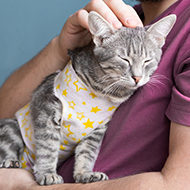Coccidiosis: Vets Urged to be Vigilant
However, vets are reporting that interpretation of laboratory tests used to confirm diagnosis, such as oocyst count, can be problematic due to the ubiquitous nature of the Eimeria parasite in the UK.
Young animals may be infected by oocysts shed by asymptomatic carriers or infected older cohort animals. Low levels of challenge can help young animals develop immunity but exposure to high oocyst numbers, particularly in combination with stress can lead to clinical and subclinical forms of the disease. Diagnosis can be problematic, particularly in subclinical cases of disease where failure to gain weight is the main presenting sign and in clinical cases the differential diagnoses include all causes of scour in young animals.
Janssen Animal Health has suggested a few indicators that may be useful in identifying cases of coccidiosis. The Vecoxan Coccidiosis Survey in 2008 and 2009 asked farmers about their experiences of coccidiosis and identified that bad weather was a major trigger particularly in lambs; while castration and weaning were also factors in calves. As the parasite life cycle is 21 days, vets should be alert to disease 2-3 weeks after a stressor event.
The company has also suggested a few guidelines to aid interpretation of laboratory results:
- Identification of pathogenic Eimeria species can be suggestive but does not provide conclusive evidence of a causative effect.
- Speciation of Eimeria is useful (not easy in lambs) as there are several non-pathogenic strains which can give high counts without clinical effect
- The number of oocysts will not always correlate with clinical signs
- Low levels of oocysts in faeces are less likely to be significant but some animals can die even while excreting at a low level because shedding occurs after the gut damage has already occurred.
- There is extensive replication and multiplication through the parasite lifecycle – susceptible infected animals will usually shed millions or even billions of oocysts.
- Adult animals that are infected but immune tend to excrete oocysts at a regular low level.
- A pooled sample from at least 10 lambs or calves may give a better indication of the level of infection.
- The history of the farm, the individual patient and the presence of risk factors should be taken into account when interpreting results.



 RCVS Knowledge has called on vet practices to audit their post-operative neutering outcomes.
RCVS Knowledge has called on vet practices to audit their post-operative neutering outcomes.